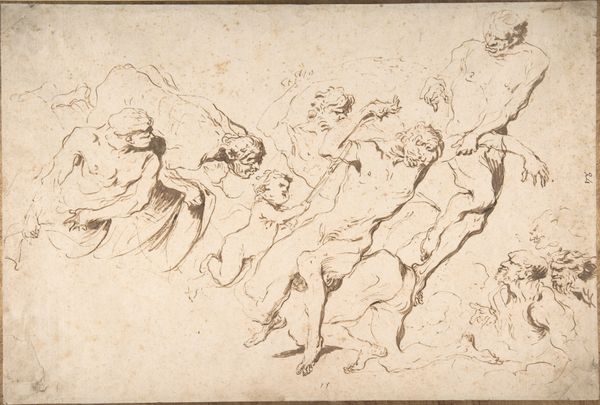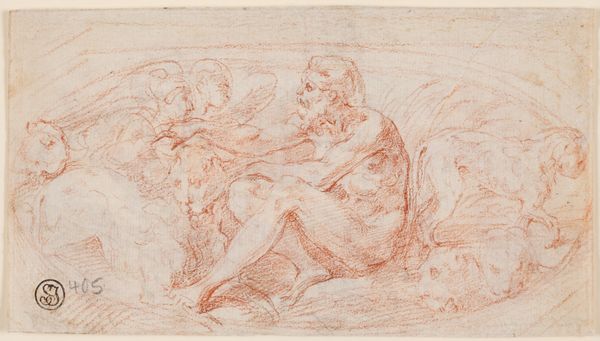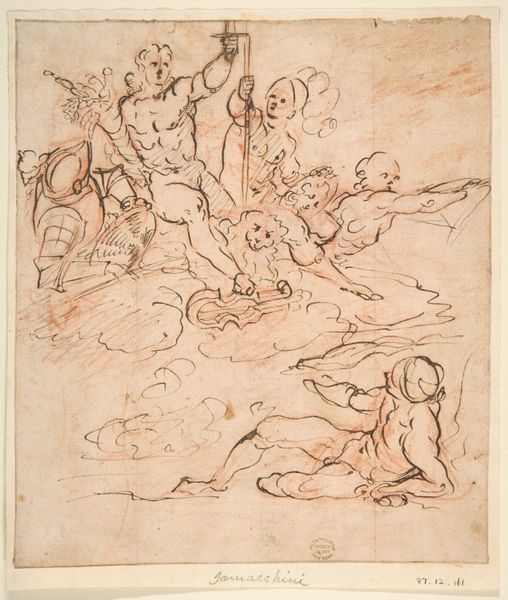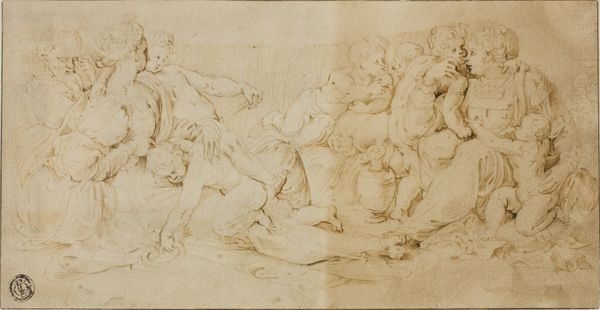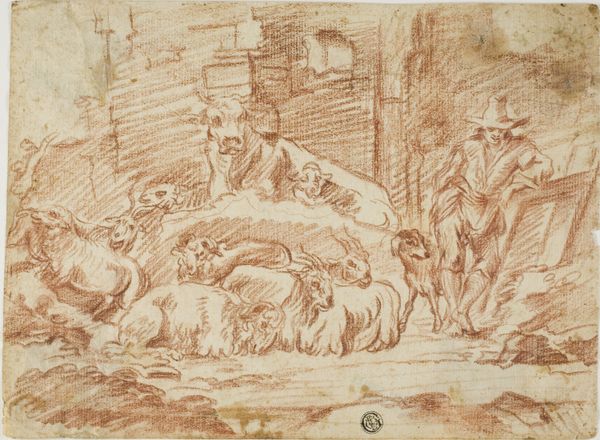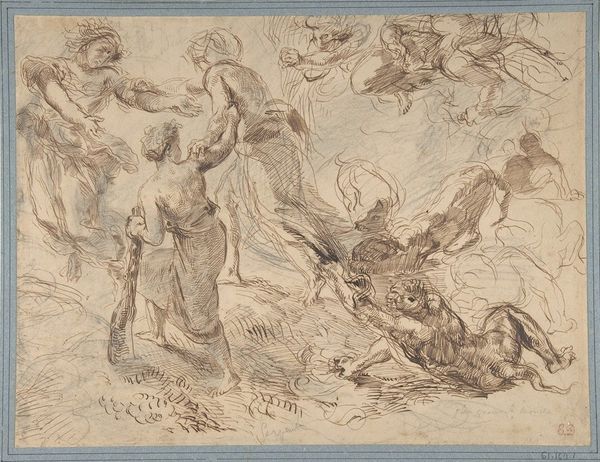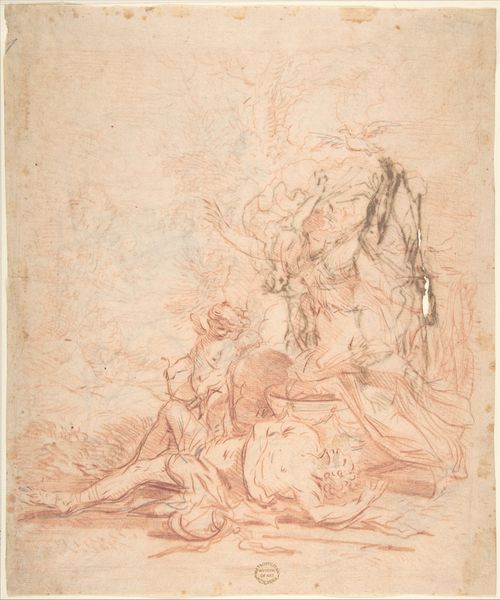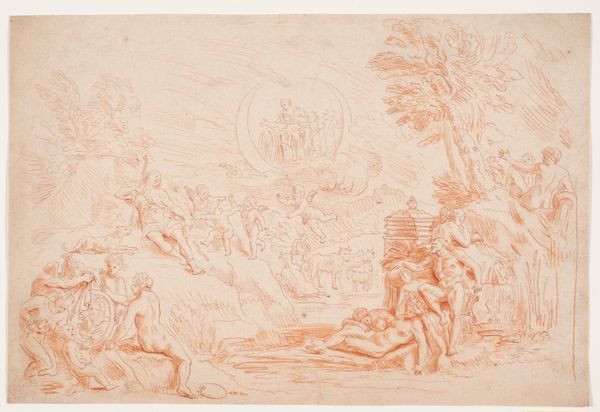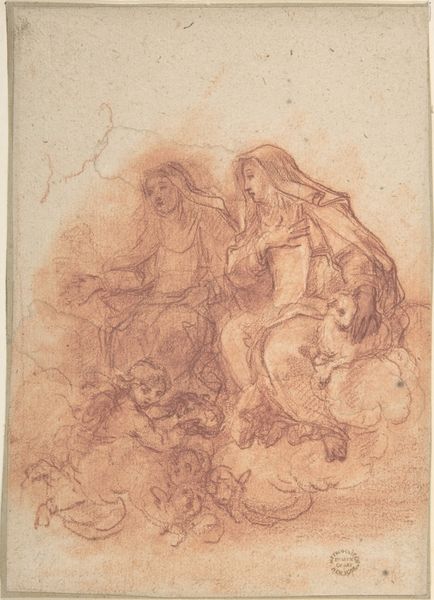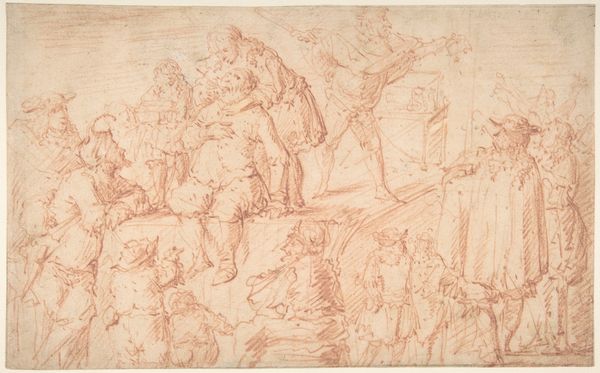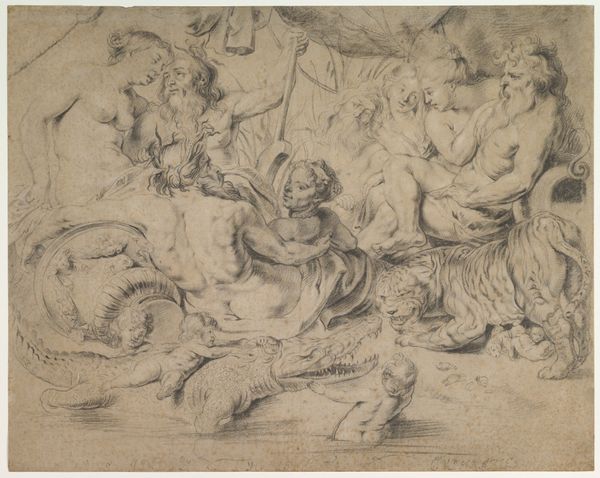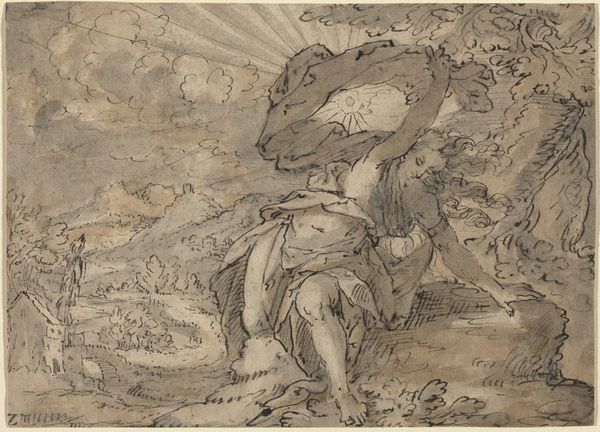
drawing
#
drawing
#
baroque
#
figuration
#
history-painting
Dimensions: 8-1/4 x 8-9/16 in. (20.9 x 21.7 cm)
Copyright: Public Domain
Editor: We're looking at a drawing titled "Figures and a River God," dating from 1600 to 1700, currently housed in the Metropolitan Museum of Art. It's a reddish drawing. The composition feels classical, with all these figures draped in fabric, but it's difficult to say what is happening here. What do you see in this piece, from a historical point of view? Curator: This drawing is a fantastic example of how socio-political forces shaped art in the Baroque period. The idealized, muscular figures evoke a classical past, aligning with the Baroque era's tendency to look back to the power and grandeur of ancient Rome and Greece. Think about the patrons who would commission works like this. They were, in many ways, crafting a visual narrative of power and continuity. Editor: So it was a way of aligning themselves with classical ideals? Curator: Exactly! These mythological and historical allusions in art reinforced their authority. Also, note the use of red chalk. Drawing was critical for disseminating artistic ideas and training artists, allowing the style to be quickly proliferated through artistic workshops that were so critical to art production in the Baroque. Do you see how the figures, even in their sketchy state, have a weightiness and drama that was appealing to audiences? Editor: I see what you mean. The drama makes me think of Baroque opera, which makes sense, since they were both for the same social circles. How were drawings like this exhibited in the Baroque period? Curator: Good question. Drawings like this could be collected as objects of value in themselves, by the aristocracy, but more often were made as part of the workshop and teaching process in large, organized art businesses. Many drawings of this era come down to us unbound, or sometimes they ended up in albums later. In that sense, its reception is very different from the large, public history paintings on display, as it reflects the more private sphere of workshops and collector's studies. Editor: It's fascinating to think of art circulating in different ways, influencing artistic tastes and reflecting specific social and political agendas. Thanks for giving us new ways of understanding its impact on its period! Curator: My pleasure. Seeing art within these social and historical contexts can really change how we view these works, doesn't it?
Comments
No comments
Be the first to comment and join the conversation on the ultimate creative platform.
